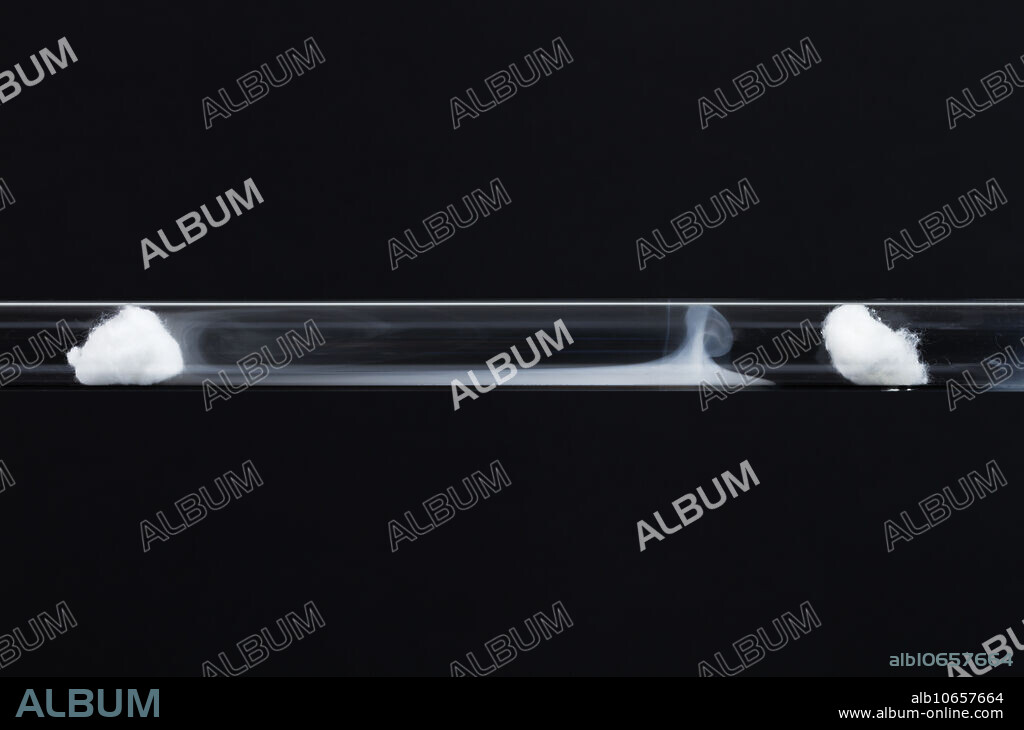alb10657664
Ammonium chloride formation

|
Añadir a otro lightbox |
|
Añadir a otro lightbox |



¿Ya tienes cuenta? Iniciar sesión
¿No tienes cuenta? Regístrate
Compra esta imagen.
Selecciona el uso:

Título:
Ammonium chloride formation
Descripción:
Ver traducción automática
Ammonium chloride formation. A glass tube is plugged by cotton balls at both ends. Small amounts of concentrated ammonium hydroxide (NH4OH, 28-30%) and concentrated hydrochloric acid (HCl, 32-36%) are used to wet the two balls. Colorless ammonia (NH3) and hydrogen chloride (HCl) gases diffuse from the respective balls. When they meet, they react and produce a ring of fine white powder of ammonium chloride: NH3 + HCl -> NH4Cl. Molecular weight of ammonia is less than that of hydrogen chloride, therefore it diffuses faster and the white ring is formed closer to the ball with the hydrochloric acid.
Crédito:
Album / Science Source / Turtle Rock Scientific
Autorizaciones:
Tamaño imagen:
5056 x 3341 px | 48.3 MB
Tamaño impresión:
42.8 x 28.3 cm | 16.9 x 11.1 in (300 dpi)
 Pinterest
Pinterest Twitter
Twitter Facebook
Facebook Copiar enlace
Copiar enlace Email
Email
